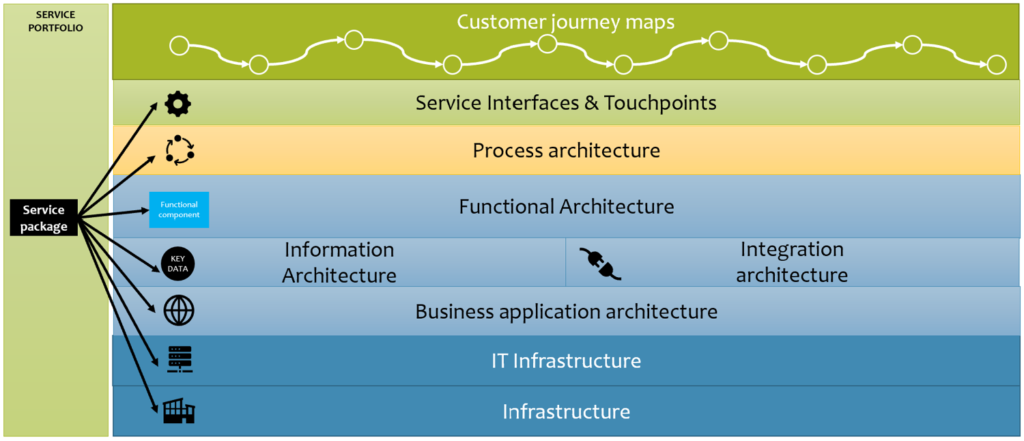Business Continuity and Disaster Recovery planning loves Configuration Management
Exciting news! Your supervisor has just tasked you with hashing out Business Continuity and Disaster Recovery (BC&DR) plans for the new/existing service your organization is providing for your internal or external customers. This is the opportunity you have been waiting for!
Where to start?
In order to create a Business Continuity Plan (BCP) for a service, you first need to understand the components of the service.
- Customer journeys and associated Service Interfaces (Phone, web pages, APIs, SMS, etc) – “How do our customers and other users access the service”
- Underlying Services and contracts – “What are those service touchpoints made of”
- Processes and the organization around them – “What entities are processing the information and how”
- Functional architecture, information architecture, and integration architecture – “What functional components are we using from which business applications and what information are we processing and how is it moving between the functional components and systems”
- Business applications – “What information systems are we using in our processes”
- IT Infrastructure – “What are the components of the information systems we are using”
- Infrastructure (physical world) – “Where are all the components located in the physical world”

Why do you need all this information?
The reason is that in your Business Continuity Plans, you need to be able to describe how your service will continue to function in an adverse situation such as
- Pandemic or other reason why your staff can not work from your offices or other physical locations
- Fire, water damage, or other serious physical malady at one or more of your locations
- Bankruptcy of one of your suppliers
- <any other major event your Risk Management has identified as a potential threat to your service>
So, you will need to understand the components in order to prepare for a disaster impacting one or more of the components and the associated Business Impact.
Another reason is that your Disaster Recovery Plans must describe how each component (usually a piece of Information Technology but of course it could be any other component) is brought back from a disastrous event. Additionally, you will need to be able to practice those plans in order to be able to truly gauge the amount of time it takes to bring the component back to service and how much data can we expect to lose during the operation. In other words, you need to figure out the Recovery Time Objective (RTO) and Recovery Point Objective (RPO) for each component.
If you are starting from nothing, this sounds like a daunting task, doesn’t it?
Where the organization should have started
Organizations need to have a clearly defined Operating Model for (IT) Service Management describing the tools, organization, processes, and maintained information. Other term for the same is that organizations need to have Service Management System (SMS) defined.
One particularly useful piece of that puzzle is Configuration Management. It describes the who, what, where, and how the Configuration Management Database (CMDB) is maintained and in what format (data model). That should answer most of the questions we had in our “Where to start” section.
Having an up-to-date information of the components of your service and the dependencies between the components and other services is crucial for being able to create an accurate Business Continuity and Disaster Recovery Plan. Configuration Management makes sure you have that information available, and not only for that purpose.
Contact us if your organization requires help in defining the
- Operating Model for Service Management (or Service Management System)
- Business Impact Analysis
- Business Continuity and Disaster Recovery Plans
- Configuration Management, Service Asset and Configuration Management, or CMDB
Need to know more?
Creative Service Management -handbook serves as an aid and information source for people working with service development, leadership and management. Order your copy in JustinShop.
If you need training on CMDB, Service Catalog topics or want to know the secrets of IT4IT, click here and familiarize yourself with Justin’s training offering
Checkout Creative Service Management videos on our Youtube-channel
- Intelligent Data Processing, introduces the secrets of functional architecture. The functional architecture enables the intelligent design and description of internal management systems, their functionalities, and the information processed in them.
- CMDB A-B-C: what a CMDB is and what benefits its use will bring to service organizations. In addition, the video will list the 4 most important things to consider when implementing CMDB and configuration management. English subtitles available!
If you’re not already following us on LinkedIn, you can fix it easily here: https://www.linkedin.com/company/justin-group-oy/
Julkaistu 17.03.2022
